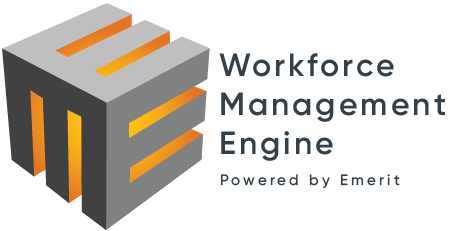

An innovative competency framework for Canada's tourism sector
The world never stops changing, and neither will Canada's tourism sector
A smarter way to manage tourism talent
The Workforce Management Engine’s competency framework helps tourism organizations of all shapes and sizes address their HR needs.
Communicate job expectations in objective, observable terms.
Reliably and consistently assess job applicants.
Create reusable job ads and interview guides.
Map detailed career development plans.
Accurately gauge employee performance.
Identify and address performance gaps.
Develop training programs that align with industry needs.
The Workforce Management Engine is designed for:
Employers
Educators
Tourism industry HR organizations
Access the Workforce Management Engine, and start using our Tourism Competency Framework.
The Workforce Management Engine contains:

National Occupational Standards (NOS)

Tourism Competency Framework
Tools to Meet Workforce Needs
The Workforce Management Engine includes a suite of interactive tools that allows users to activate the Tourism Competency Framework benefits:
Job Description Tool
Build accurate job descriptions with ease to help recruit and retain the right employees for your organization.
Users can choose an NOS for a tourism occupation, then tailor it to their unique requirements in the form of a competency-based job template. This template includes the purpose of a job, its responsibilities, and the competencies necessary for continued success.
How it works
- Select your desired NOS.
- Add or remove competencies as best reflects the job as it exists within your organization.
Customized Occupational Profiles
Create a profile for occupations not covered by an existing National Occupational Standard to help your organization meet its unique workforce needs.Users can choose the NOS that most closely resembles their organization’s occupations, and then create their own occupational profiles that identify the required competencies.
How it works
- Select a National Occupational Standard as your foundation.
- Freely change it until it accurately describes your unique job.
Job Comparisons
Explore the similarities and differences between two occupations to help individuals plan their tourism careers.Users can select any industry-validated NOS and generate a report showing the competencies it shares with another occupation. This report can then be used to assist individuals with career planning or exploration.
How it works
- Select the occupations you want to compare.
- Generate the report.
- Explore a detailed breakdown of shared competencies.
Skills Checklists
Evaluate an individual’s abilities in relation to an NOS or a customized occupational profile to accurately assess whether they possess the required competencies.Users can select the tourism occupation of their choice, then generate a list of competencies necessary to be successful in this position. This checklist can then be used to identify the competencies an employee possesses, promotion readiness, or areas for development.
How it works
- Select either an NOS or a customized profile.
- Generate a list of required competencies.
- Rate each competency on a five-point scale.
A competency-based approach
A competency-based approach to workforce management allows tourism stakeholders to unlock new opportunities for growth and quickly respond to changing industry needs.
The Workforce Management Engine ensures that these competencies can be applied in ways that reflect the unique conditions faced by each region, organization, and occupation.
Questions about the Workforce Management Engine?
Contact Tourism HR Canada at info@TourismHR.ca
